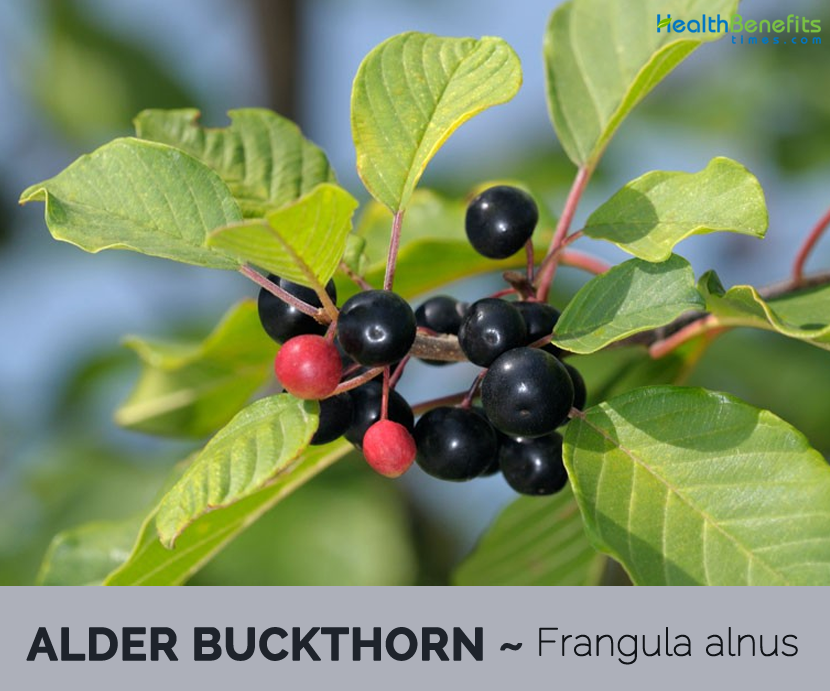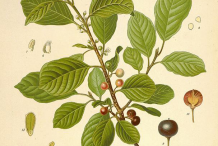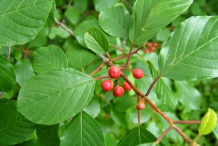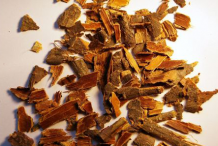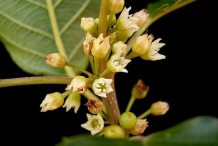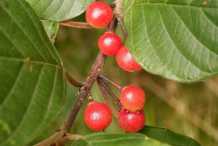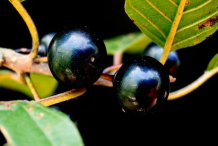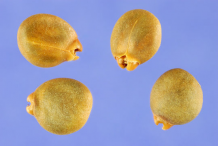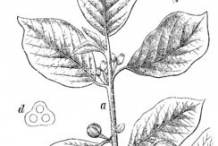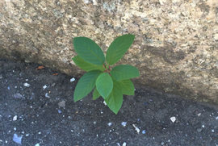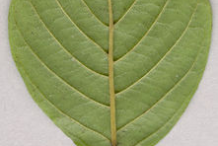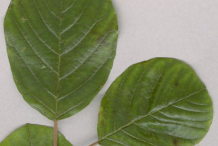| Alder Buckthorn Quick Facts |
| Name: |
Alder Buckthorn |
| Scientific Name: |
Frangula alnus |
| Origin |
Europe, northern Africa, and central Asia |
| Colors |
Ripening from green through red to dark purple or black |
| Shapes |
Small berry 6–10 mm (1⁄4–13⁄32 inch) in diameter, containing two or three pale brown 5-millimetre (3⁄16-inch) seeds |
| Taste |
Pleasant, sweetish and slightly bitter |
Alder buckthorn (Rhamnus frangula), also called Black Dogwood. Frangula Bark, Glossy Buckthorn, Alder Buckthorn, Fernleaf Buckthorn, Tallhedge Buckthorn, Alder Dogwood, Black Dogwood, Arraclán, Arrow Wood, Black Alder Tree, Aulne Noir, Black Dogwood, Bois Noir and Bois à Poudre is a woody shrub or small tree of the buckthorn family (Rhamnaceae), native to western Asia, Europe, and northern Africa. It has been introduced into North America and other regions, where it is often cultivated as an ornamental. The genus name is derived from the Latin word ‘frangere’ meaning to break, perhaps a reference to the brittle nature of its branches.
Plant Description
Alder buckthorn is a tall, non-spiny, deciduous shrub or small tree that grows about 3–6 m (10–20 ft.) tall, occasionally to 7 m (23 ft.) tall. It is found growing in moist to wet sites in mixed woodlands, thickets, sphagnum bogs, and on roadsides, lake shores, ditches, and stream banks. It prefers acidic soils though will also grow on neutral soils. Bark is narrow, single or double quills and is of papery texture, about 1/25 inches thick. It is of a greyish or blackish-brown color outside, with numerous small, whitish corky warts. Inner surface of the bark is smooth, of a pale, yellowish brown and very finely striated and stout, erect branches. Twigs are smooth, straight and purple to brown in color.
Leaves
Leaves are arranged alternately on 8–15-millimetre (5⁄16–19⁄32-inch) petioles. They are petiolate, obovate in shape, 2-7 cm in length and usually little more than half as wide. They are cuspidate to acuminate in shape, typically ending with a short pointed tip. Leaf margins are entire but wavy, although in seedlings leaves may be serrated. The lower surface of young leaves is pubescent, being covered with dense brownish hairs which are later shed so that older leaves are glabrous and shiny green in color. Sun leaves are relatively broader and shinier than shade leaves. The leaves turn yellow, then red in the autumn. Lateral veins are conspicuous on the upper surface of the leaves with 6-12 (commonly 7) pairs running more or less parallel to each other.
Flower & fruit
Flowers are small, 3–5 mm (1⁄8–3⁄16 inch) in diameter, star-shaped with five greenish-white acute triangular petals, hermaphroditic, and insect-pollinated, flowering in May to June in clusters of two to ten in the leaf axils. Fruit is a small berry 6–10 mm (1⁄4–13⁄32 inch) in diameter, containing two or three pale brown 5-millimetre (3⁄16-inch) seeds. Fruits ripen from green through red to dark purple or black.
History
The plant is native to Europe and western Asia. It was brought to North America as an ornamental and medicinal plant in the late 18th century and has since spread across northern parts of the continent. The first record in Minnesota was from Hennepin County in 1937. Common buckthorn grows in a wide range of habitats including forests, savannas, wetland edges, open areas, and disturbed areas. It endures shade and can also grow in the open so is an effective colonizer of forest gaps. Two other species of buckthorn grow in Minnesota: glossy buckthorn (R. frangula), an introduced shrub that has become a significant invader in parts of eastern North America, and alder buckthorn (R. alnifolia), and a native species.
Traditional uses and benefits of Alder Buckthorn
- Alder buckthorn has been used medicinally as a gentle laxative since at least the middle Ages.
- It is so gentle and effective treatment when recommended in the correct dosages that it is completely safe to use for children and pregnant women.
- Inner bark is cathartic, cholagogue, laxative (the fresh bark is violently purgative), tonic, vermifuge.
- It is taken internally as a laxative for chronic atonic constipation and is also used to treat abdominal bloating, hepatitis, cirrhosis, jaundice, and liver and gall bladder complaints.
- It should be used with caution since excess doses or using the bark before it is cured can cause violent purging.
- Externally, the bark is used to treat gum diseases and scalp infestations or as a lotion for minor skin irritations.
- Fruit is occasionally used; it is aperient without being irritating.
- It has long been recommended in various concoctions to cure ailments, such as constipation, gout, jaundice, gum disease, sore throats, lice infestations, and dry skin and to heal wounds.
- In charcoal preparations, F. alnus has been used to treat flatulence and poisoning, and also as a deodorizing substance.
Different Uses
Decorative
Alder buckthorn has limited decorative qualities without conspicuous flowers or bold foliage, and is mainly grown for its conservation value, mostly to attract Brimstone butterflies. A variegated cultivar Frangula alnus ‘Variegata’ and a cultivar with very slender leaves ‘Asplenifolia’ are sometimes grown in gardens as ornamental shrubs. The cultivar ‘Tallhedge’ has been selected for hedging.
Medicinal
Galen, a Greek physician of the 2nd century A.D., knew of alder buckthorn, although he did not distinguish clearly in his writings between it and other closely related species. All of these plants though, were credited with the power to protect against witchcraft, demons, poisons, and headaches.
The bark (and to a lesser extent the fruit) has been used as a laxative, due to its 3 – 7% anthraquinone content. Bark for medicinal use is dried and stored for a year before use, as fresh bark is violently purgative; even dried bark can be dangerous if taken in excess.
Charcoal
Alder buckthorn charcoal is prized in the manufacture of gunpowder, being regarded as the best wood for the purpose. It is mostly highly valued for time fuses because of its very even burn rate. The wood was formerly used for shoe lasts, nails, and veneer. The bark yields a yellow dye, and the unripe berries furnish a green dye.
Other Uses
- Yellow dye is obtained from the leaves and bark.
- Green dye is obtained from the unripe fruit.
- Blue or grey dye is obtained from the ripe berries.
- Plants can be grown as an informal (untrimmed) hedge, though they are also amenable to trimming.
- Wood is used to make wooden nails, shoe lasts, veneer etc.
- It is the source of a high quality charcoal that is used by artists.
- The wood sharpens well and has been used to make arrows, nails and skewers.
- It has also been used for walking sticks and, when split, for cane chair seats and basket work.
- Because it is hard and durable, larger pieces have been used to make shoes.
Precautions
- The plant is poisonous unless stored for 12 months before use.
- This report is probably referring to the bark.
- Do not use in cases of intestinal obstruction, stenosis, atony, inflammatory colon disease, appendicitis, abdominal pain of unknown origin.
- Avoid long-term use.
- Avoid its use for more than 8 days, it may decrease the Potassium level and causes Heart problems, Stomach problems, weak muscles, blood problems and bloody urine.
- Use of fresh bark may cause vomiting.
- Avoid it if you are suffering from Diarrhea, it may cause worst conditions.
- Women who are pregnant or breast-feeding and children under the age of 12 should not use alder buckthorn without the advice of a physician.
- It causes stool to move more rapidly through the large intestine and allows the body less time to reabsorb fluids and electrolytes.
References:
https://www.itis.gov/servlet/SingleRpt/SingleRpt?search_topic=TSN&search_value=28579#null
http://pfaf.org/user/Plant.aspx?LatinName=Frangula+alnus
https://www.botanical.com/botanical/mgmh/b/buckth80.html#ald
http://davesgarden.com/guides/pf/go/1828/
http://www.theplantlist.org/tpl1.1/record/kew-2814031
https://plants.usda.gov/core/profile?symbol=FRAL4
http://www.uofmhealth.org/health-library/hn-3650004
https://en.wikipedia.org/wiki/Frangula_alnus
http://www.cabi.org/isc/datasheet/47001
https://www.entm.purdue.edu/iisc/pdf/plants/more/glossy_buckthorn.pdf
Comments
comments


